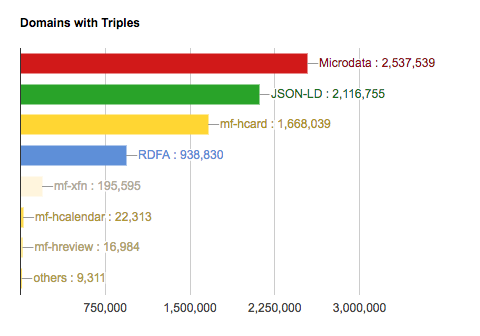You probably talk about RDFa if you compare it to Microdata (RDF is a data model, which can be expressed with many different syntaxes like RDFa, Turtle, RDF/XML, JSON-LD, etc.).
Note that RDFa 1.0 is a W3C Recommendation from 2008, and RDFa 1.1 Core (and RDFa 1.1 Lite) is a W3C Recommendation from 2012, while Microdata is pretty new and still a W3C Working Draft merely a Working Group Note (2013-10-29). Some people argue (e.g. Manu Sporny, an editor of the RDFa specifications) that the W3C shouldn’t publish Microdata as a Recommendation because it’s so similar to RDFa.
Have a look at the HTML Data Guide (W3C Interest Group Note):
Microformats, RDFa and microdata all enable consumers to extract data from HTML pages. This data may be embedded within enhanced search engine results, exposed to users through browser extensions, aggregated across websites or used by scripts running within those HTML pages.
This guide aims to help publishers and consumers of HTML data use it well. With several syntaxes and vocabularies to choose from, it provides guidance about how to decide which meets the publisher's or consumer's needs. It discusses when it is necessary to mix syntaxes and vocabularies and how to publish and consume data that uses multiple formats. It describes how to create vocabularies that can be used in multiple syntaxes and general best practices about the publication and consumption of HTML data.
My subjective opinion: RDFa and Microdata will co-exist. If you want to concentrate on one of these, go with RDFa (start with RDFa Lite, which is really, really easy – you can read and understand the whole specification in 10-15 minutes). Why? RDF is the language of the Semantic Web. RDF can be used with many markup languages, not only HTML (while Microdata only works with HTML5). RDF matured over the years — there are already two "finished" specifications just for RDFa (while Microdata is still a draft).
See also: Differences between Microdata and RDFa

